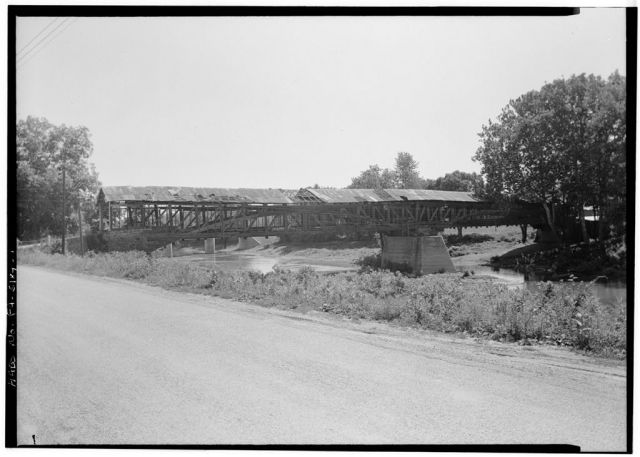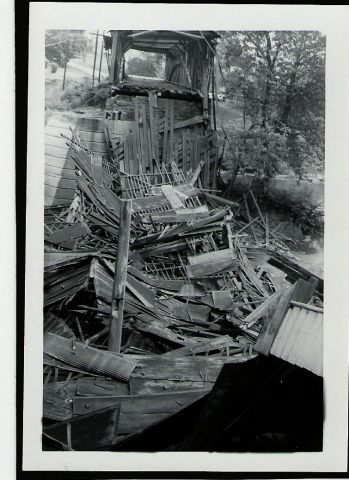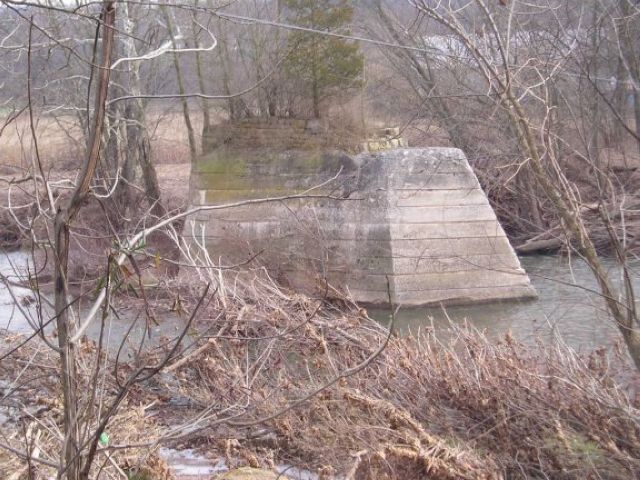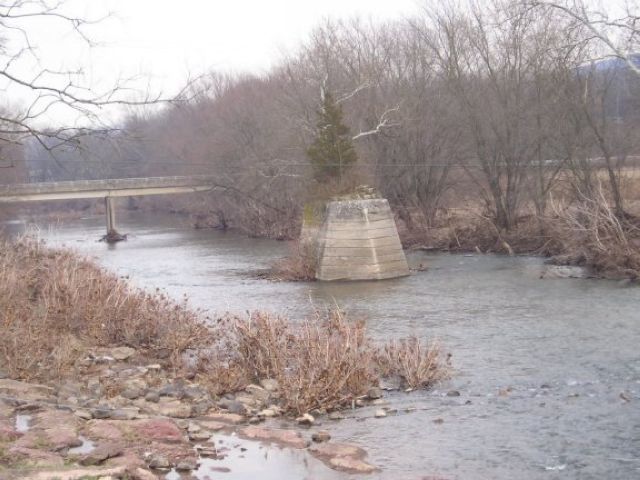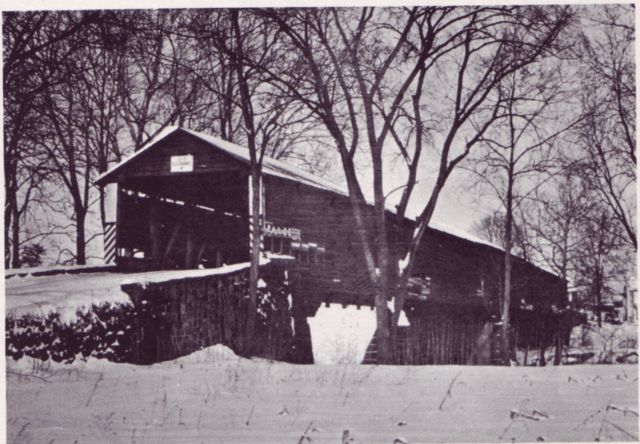
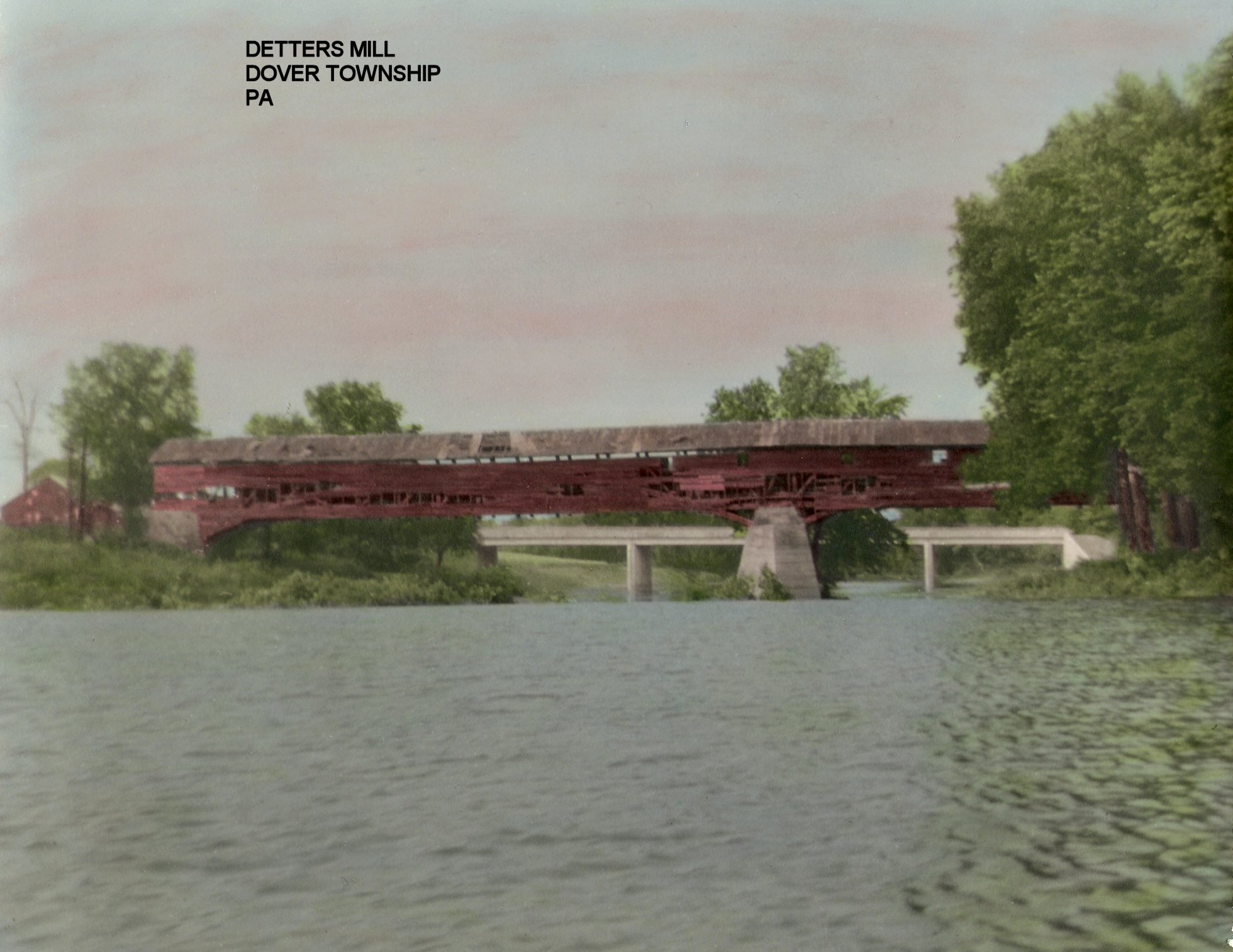
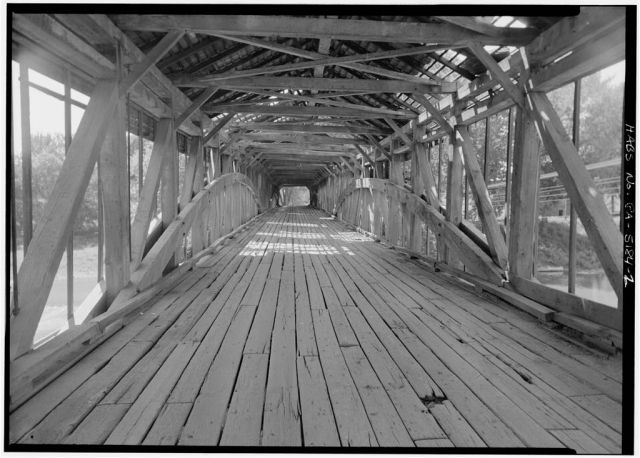
Bridges
The first bridge in York County extended across the Codorus Creek at Market Street, York, and was built in 1743. A legal record entered in January, 1768, petitioning for a new stone bridge, says, "The old bridge of wood at High (Market) Street is much decayed; the sills are rotten, so that is dangerous to cross with heavy wagons.” In the same year a stone bridge was built at this place. A wooden bridge across the Conewago, beyond Dover, was built in 1768 and a stone bridge at the same place in 1811.
Under an act of the Legislature approved April 2, 1811, a state appropriation was made to assist chartered companies in the erection of bridges across the Susquehanna at Harrisburg, at Northumberland and at McCall’s Ferry. They were all built by the noted engineer, Theodore Burr, the inventor of the “Burr Bridge Plan.” The Harrisburg Bridge was commenced in 1812 and completed October, 1816, at a cost of $192,138. The part of the bridge nearest the city was taken away by the flood of 1846, and a second bridge at a subsequent flood. Mr. Burr and his son, after completing the Harrisburg Bridge, commenced the construction of the one at McCall’s Ferry, which cost $150,000. During its short existence, it was considered a remarkable structure, but was taken away by the ice flood of 1817. Theodore Burr, who was born at Torringford, Conn., in 1762 and in 1789 married the granddaughter of Captain Cook, the great English navigator, died at Middletown, Dauphin County, November 21, 1822, while superintending the erection of a bridge across the Swatara at that town.
A bridge was built across the Susquehanna at York Furnace in 1855, and taken away by the flood the next year.
The first bridge across the Susquehanna, between Wrightsville and Columbia was completed in 1814. It was 5,690 feet long, a little more than a mile in length. It was removed by an ice flood in 1832. The second bridge was a covered wooden structure placed on twenty-three stone piers. It was destroyed by fire by a regiment of Pennsylvania troops at Columbia on the evening of June 28, 1863, to prevent Gordon’s brigade of Confederate soldiers from crossing the stream at Wrightsville to the Lancaster County side. This bridge had been used from the year 1838 to the time of its destruction by wagons and carriages and by the Pennsylvania Railroad Company. For several years passengers were transported across the river in flat boats. In 1869 the Pennsylvania Railroad Company built a third bridge across the river at this place. This structure was blown down and removed from its piers by a wind storm on September 30, 1896. This also had a driveway for carriages and wagons and a track used by the railroad company for passenger and freight trains. The fourth bridge is 5,375 feet, or a little more than a mile, in length and was built by the Pennsylvania Railroad Company in 1897, at a cost of half a million dollars. It rests upon two abutments and twenty-five piers, each 200 feet apart.
History of York County, Pennsylvania
Prowell Vol 1 1907
HABS, PA, 67-DETMI, 1
Our Covered Bridge crossed over the Conewago Creek on Harmony Grove Road in the most western part of Dover Township. Built about 1815, this bridge was a great example of early 19th century engineering. Based upon the bridges structural design of four Burr arches (2 per side), Theodore Burr, a prominent bridge builder from Torringford, Connecticut has been attributed to our bridge. The Burr arch truss, as the design became to be known, used two arches, resting on the abutments on either end that typically sandwiched a multiple kingpost structure. It was a double span bridge and measured 296 feet 11 inches by 21 feet 9 inches. Our bridge had heavy timbers, a gable roof and originally was sheathed by clapboards. Before its demise, the bridge was listed as one of the longest wooden bridges in the state of Pennsylvania. As stated on page 48 from the Greater Dover Bicentennial Celebration 1764-1964, “and stands today, awaiting a decision as to whether it should be preserved as a landmark or torn down.” The bridge was never preserved as a landmark. It met its demise in 1965.
The Society wishes to thank Randy Sharp for allowing the Society to use these pictures on our website. The little boy standing in front of the collapsed bridge is Randy Sharp.



